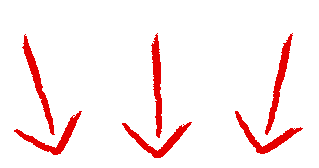Learn and Get Global Skill in
Problem Solving and Decision making skills for Engineers and Technical professionals

Overview
Problem Solving and decision making skills for Engineers and Technical professional presents a structure, process and tools to help Engineers and Technical professionals solve problems and make decisions. This course is about proactively attacking problems and making timely decisions that help you solve work problems and make decisions to bring value to your company and your customers. In addition, the skills, processes and tools taught in this course can bring value to other aspects of your life as well.
Participants will practice the six-step problem solving process by working on actual problems in class. The focus in class is on group decision making, but participants will be able to apply the same processes and tools to individual problems and decisions.
Course Objectives
Upon completion, participant in this course will be able to:
- Identify one or more problems to solve
- Create a problem statement
- Conduct a root cause analysis of the problem
- Develop criteria to evaluate solution to the problem
- Generate a list of solutions
- Select the best solution
- Validate their solution
- Develop a plan to implement the solution
- Develop a plan to monitor and verify the solution
- Develop a communication plan
Upon completion, participant in this course will be able to:
Overview of RCA
Why RCA is needed
Teams involved in RCA
Fundamentals of problem solving
How to do incident investigation
Develop CAPA to avoid future incidents
To understand various RCA tools
Understanding 5 Why technique
How to write good RCA
Execute a Real time use case of RCA – Project

OTHER BENEFITS FROM THIS TRAINING;
- Identify criteria that will be used to evaluate choices, including clear measures of success
- Understand which criteria are mandatory and which are not, and how much influence non-mandatory criteria will have
- Use simple-but-robust techniques for comparing performance of alternatives
- Consider risks associated with alternatives
Course Outline
TYPICAL PROBLEMS WITH RCA AND CORRECTIVE ACTION
- Management Systems
- What is Business Continuity Management System?
- BCM System Process
- Business Continuity Management (BCM)
- BCMS Benefits
- Business Continuity Management Lifecycle
- Applicability and Objectives
STEP 1 – PROBLEM DEFINITION
- Why most problem solving models don’t get to the root cause, and a solution
- How analytical and creative thinking must be integrated
- Needed filters in the corrective action process
STEP 2 – UNDERSTANDING THE PROCESS
- How every problem is a process failure
- How a SIPOC diagram can set boundaries and define interrelationships
- Using flowcharts to drill down into the right part of the process (includes practice)
Step 3 – IDENTIFYING POSSIBLE CAUSES
- Five ways to identify possible causes
- Three options for selecting or eliminating causes
- Logic trees as a cause & effect diagrams and 5-whys on steroids (includes practice)
STEP 4 – DATA COLLECTION
- Cause search strategies
- Check sheets, graphs and tables for discrete data collection
- Surveys, interviews and field observation for opinions or less precise data
STEP 5 – DATA ANALYSIS
- Tools for discrete data analysis (run charts, histograms, pareto diagram, modified scatter diagram, pivot tables)
- Tools for softer type data (affinity diagram, relationship digraph)
- Integrative data analysis tools
CONSULTING CASE STUDY PRACTICE
- Participants role play consulting with instructor on a problem
- Review of key learning points
INCIDENTS/EVENTS AND HUMAN ERROR
- Modifying the model for accidents, sentinel events, and project failures
- Typical causes and solutions for human error
CASE STUDY PRACTICE
- Practice on a project relevant to participants’ organization
THE REST OF THE PROBLEM SOLVING PROCESS
- Identifying and selecting solutions
- The importance of project management and consideration of change management issues
- Some models for understanding resistance and planning change
- Implementation, follow-up, and standardization
Applying Problem solving and Decision-making analysis supplementary tools
- Root cause analysis
- The five-why process
- The cause and effect diagram
- The fishbone diagrams
- Pareto analysis
- Decision making supplementary tools
- Why-Why and how-how analysis
- The decision analysis worksheet
- The Kepner & Tregoe method for analyzing alternatives
- The six thinking hats
Regular Cost
N120000
Discounted Cost
N100000
29th to 31st August, 2023
9am to 3pm daily
Remoik Training and Consulting,(Kristina Jade Learning Center) 70B, Olorunlogbon street, Anthony, Lagos
Certificates will be awarded
Call Now to register; 08066559530
Email: [email protected]